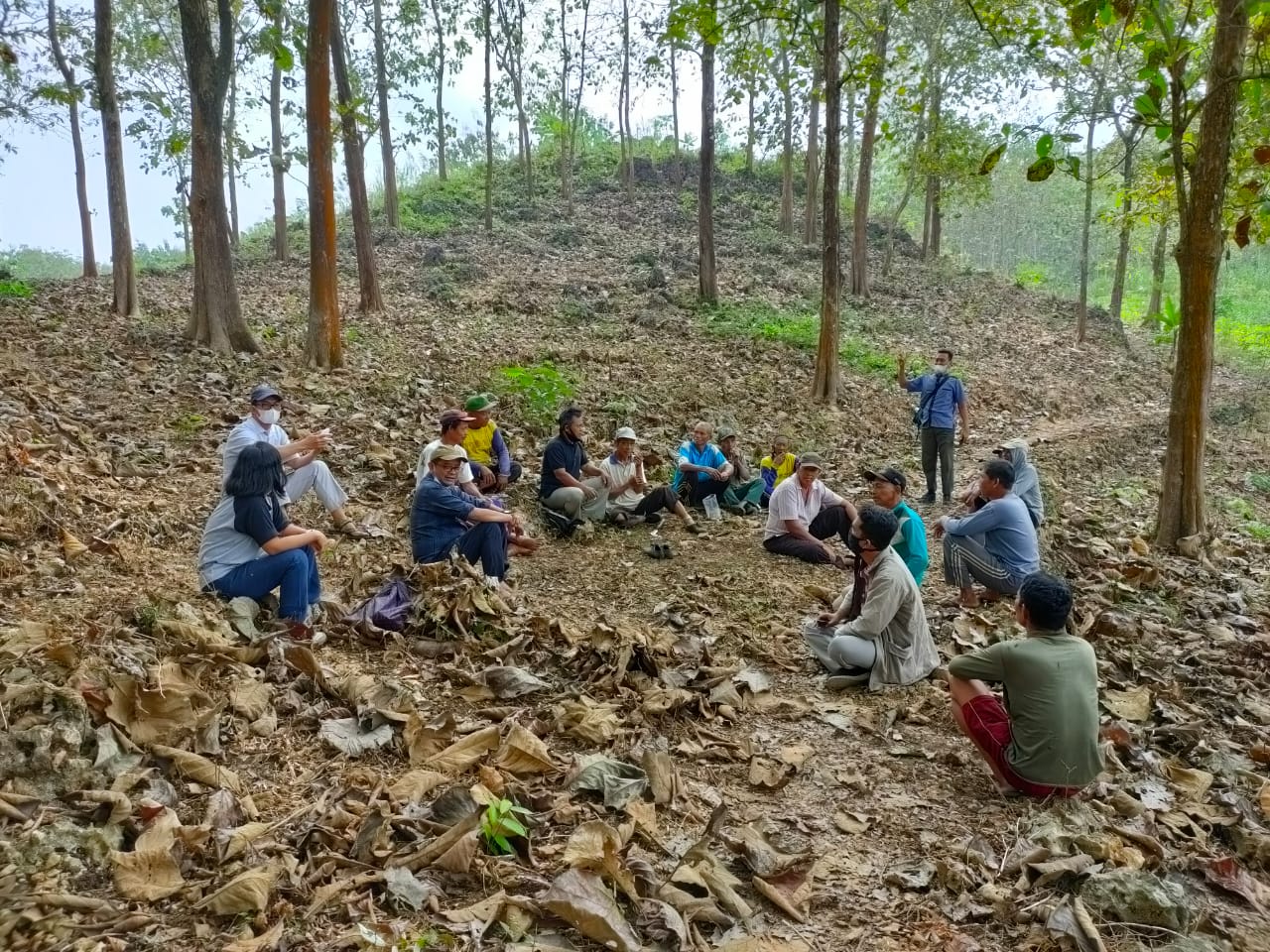Social and Economic Vulnerability in The Sub-Watershed of Karang Mumus, East Kalimantan Province
Abstract
Changes in land use influence the social and economic characteristics as well as the environmental problems in a sub-watershed. To support the management of a sub-watershed, land use scenarios (biophysics) must be prepared and community involvement level must be improved. So far, the factors used for monitoring and evaluating sub-watershed performance have not been used thoroughly. This research is aimed at finding out the social and economic vulnerabilities tied to the monitoring and evaluation of sub-watershed performance across the sub-districts. This research uses quantitative methods employed to process primary data (biotic: vegetation and settlement, and abiotic: land, climate, geomorphology, and geology), secondary data (community data sourced from the data of BPS; Central Bureau of Statistics) of East Kalimantan Province; in September 2017), and socio-economic data (direct interviews using questionnaires). The primary data were obtained after processing map interpretation and from observation. The results show that high socio-economic vulnerability occurs in areas of high land use vulnerability. Sub-watershed management will be successful if it is done through a "collaborative management" involving all stakeholders. The scenario simulations of this research can be used as reference materials for regional governments in planning, compiling, and implementing the Regional Spatial Plan policies.
References
Amin, A. (2009). Pernyataan keprihatinan terhadap fenomena banjir, Kalimantan Timur. Retrieved from http://www.mail-archive.com/envorum@ypb/or.id/ msg01949 html
Bawole, R., Rumere, R., Mudjirahayu, & Pattiasina, T. P. (2013). Performance of coral reef management: Integrating ecological, socio economic, technological, and institutional dimensions. Jurnal Manajemen Hutan Tropika, 19(1), 63–73. https://doi.org/10.7226/ jtfm.19.1.63
Becerra, E. H. (1995). Monitoring and evaluation of watershed management project achievements. FAO Conservation Guide 24.
BPS [Central Bureau of Statistics]. (2017). Samarinda dalam angka tahun 2017. Samarinda: BPS Samarinda.
Burgess, R., Hansen, M., Olken, B., & Sieber, S. (2010). The political economy of deforestation in the tropics. Coventry: The University of Warwick.
Innah, H. S., Suharjito, D., Dharmawan, A. H., & Darusman, D. (2013). Collective action typologies and reforestation in indigenous community of Biak-Papua. Jurnal Manajemen Hutan Tropika, 19(1), 11–22. https://doi.org/10.7226/jtfm.19.1.11
Karminarsih, E. (2007). The use of ecosystemmangrove in minimalize disaster impact in beach area. Jurnal Manajemen Hutan Tropika, 18(3), 182–187.
Kartodihardjo, H., Didik, S., Bramasto, N., & Ahmad, D. (2013). Development of small holder plantation forests: An analysis from policy process perspective. Jurnal Manajemen Hutan Tropika, 19(2), 111-118. https://doi.org/10.7226/jtfm.19.2.111
Mulyanto, L., & Jaya, I. N. S. (2004). Spatial analysis on forest degradation and deforestation: A case study in Duta Maju Timber, West Sumatera. Jurnal Manajemen Hutan Tropika, 10(1), 29-42.
Nugroho, B. (2011). Land right community forest plantation policy: Analysis from institutional perspectives. Jurnal Manajemen Hutan Tropika, 17(3), 111-118.
Paimin, Sukresno, Tyas, M., Basuki, & Purwanto. (2002). Monitoring dan evaluasi daerah aliran sungai dalam perspektif diagnosa kesehatannya. Paper presented at Seminar Monitoring dan Evaluasi Pengelolaan DAS. Surakarta, Indonesia.
Paimin. (2009). Laporan akhir hasil penelitian tahun 2003-2009. Usulan kegiatan hasil penelitian (UKP). Sistem karakterisasi daerah aliran sungai. Solo: Balai Penelitian Kehutanan Solo.
Purwanto, J., Rusolono, T., & Prasetyo, L. B. (2015). Spatial model of deforestation in Kalimantan from 2000 to 2013. Jurnal Manajemen Hutan Tropika, 21(3), 110–118. https://doi.org/10.7226/jtfm.21.3.110
Rusdiana, O., Sudaryanto, Ichwandi, I., Arifjaya, N. M., Hendrayanto, & Soekmadi, R. (2013). Hubungan kerjasama institusi dalam pengelolaan daerah aliran sungai kasus DAS Ciliwung. Bogor: Fakultas Kehutanan Institut Pertanian Bogor
Sanudin, & Antoko, B. S. (2007). Kajian sosial ekonomi masyarakat di DAS Asahan, Sumatra Utara. Jurnal Penelitian Sosial dan Ekonomi Kehutanan, 4(4), 355–367.
Sembiring, S., Basuni, S., & Soekmadi, R. (2010). Conflict resolution of Teluk Cenderawasih National Park management in Teluk Wondama Regency. Jurnal Manajemen Hutan Tropika, 16(2), 84–91.
Siahaan, C. H. (2008). Semua bupati punya saham? Retrieved from https://www.bongkar.co.id/news/ pertambangan/505-semua-bupati-punya-saham.html
Soedomo, S. (2013). Total economic value in investment analysis. Jurnal Manajemen Hutan Tropika, 19(2), 201–207. https://doi.org/10.7226/jtfm.19.3.201
Suarga, R. (2005). Pemberantasan illegal logging optimisme di tengah praktek premanisme global. Jakarta: Wana Aksara.
Sulistiyono, N., Jaya, I. N. S., Prasetyo, L. B., & Tiryana, T. (2015). Spatial model of deforestation in Sumatera Island using typological approach. Jurnal Manajemen Hutan Tropika, 21(3), 99–109. https://doi.org/10.7226/jtfm.21.3.99
Susilo, H. (2009). 35 DAS di Jawa Tengah kritis. Kompas, 7 April 2009.
Timpakul. (2007). Hutan Kaltim menuju fase kegelapan. Retrieved from http://timpakul.hijaubiru.org/hutan-12.html
Turner, B. L. II, Skole, D., Sanderson, S., Fischer, G., Fresco, L., & Leemans, R. (1995). Land-use and land- cover change; Science/Research Plan. IGBP Report No. 35, HDP Report No. 7. IGBP and HDP, Stockholm and Geneva
Walker, J., Alexander, D., Irons, C., Jones, B., Penridge, H., & Rapport, D. (2006). Catchment health indicators: An overview. In J. Walker, & D. J. Reuter, Indicators of cacthment health. A technical perspective. Australia: CSIRO.
Wijaya, P. A., Saleh, M. B., & Tiryana, T. (2015). Spatial model of deforestation in Jambi Province for the periode 1990–2011. Jurnal Manajemen Hutan Tropika, 21(3), 128–137. https://doi.org/10.7226/ jtfm.21.3.128
Wiyono, T. P. (2008). Pentingnya partisipasi dan penguatan kelembagaan masyarakat dalam pengelolaan hutan Jawa. Paper preesnted at Kursus Pengelolaan Hutan. DERAS Training Centre. Yogyakarta: Indonesia.
www.KaltimPOS.com. 2019. Banjir Samarinda 2019 ini mirip banjir 1998. Retrieved from http://kaltim.prokal. co/read/news/356739-banjir-samarinda-2019-ini-mirip-banjir-1998.html.
Zulkarnaen, I. (2008). Catatan akhir tahun - Banjir berkali-kali, catatan kelam Samarinda 2008. Retrieved from http://www.news.id.finroll.com/catatan-akhir-tahun/3578-catatan-akhir-tahun-banjir-berkali-kali-catatan-kelam-samarinda-2008-olehiskandar-zulkarnaen.html
Authors

This work is licensed under a Creative Commons Attribution 4.0 International License.
Jurnal Manajemen Hutan Tropika is an open access journal which means that all contents is freely available without charge to the user or his/her institution. Users are allowed to read, download, copy, distribute, print, search, or link to the full texts of the articles in this journal without asking prior permission from the publisher or the author. This is in accordance with the Budapest Open Access Initiative (BOAI) definition of open access.




